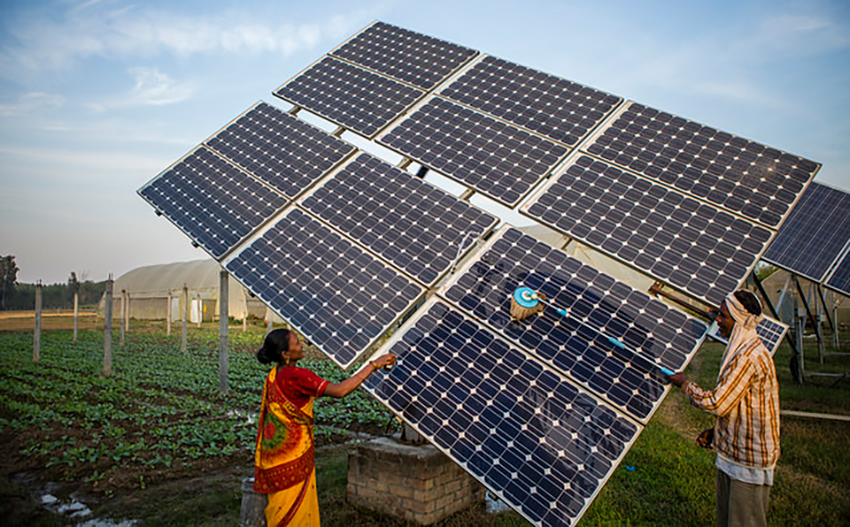Issue Brief
Filling the Skill Gap in India’s Clean Energy Market
Solar Energy Focus
Arunabha Ghosh, Neeraj Kuldeep, Kanika Chawla, Anjali Jaiswal, Meredith Connolly, Nehmat Kaur, Bhaskar Deol, Sameer Kwatra
February 2016 | Energy Transitions, Sustainable Livelihoods
Suggested Citation: Ghosh, Arunabha, Kanika Chawla, Neeraj Kuldeep, Anjali Jaiswal, Meredith Connolly, Nehmat Kaur, Bhaskar Deol, Sameer Kwatra. 2016. Filling the Skill Gap in India’s Clean Energy Market-Solar Energy Focus. New Delhi; New York: Council on Energy, Environment and Water and Natural Resources Defense Council.
Overview
This report outlines the nature of skills essential for increasing renewable energy deployment in India (especially in the solar sector) and lays out a roadmap to upgrade these skills.
Released during the Make in India week held in February 2016, the analysis (in collaboration with the NRDC India) found that solar developers will need a multitude of skilled workers across every phase of a solar project. To reach 100 GW of solar by 2022, India would need nearly 2,10,800 skilled site engineers and approximately 6,24,600 semi-skilled technicians for construction, most of whom would be needed to achieve the targeted 40 GW rooftop solar capacity addition.
This brief was released along with a companion analysis of the skill gap in the wind energy sector in India.

Farm workers clean the solar panels for better efficiency in Karnal, India (Source: Prashanth Vishwanathan/IWMI)
Key Findings
- India’s 100 GW solar target would generate more than 1.1 million jobs by 2022 spread across business development (2%), design and pre-construction (3%), construction and commissioning (72%), operations and maintenance (23%).
- Around 81,000 highly skilled workers would be needed annually by 2022 to carry out annual and ongoing performance monitoring of solar projects.
- An additional 1,82,400 workers would be needed annually by 2022 to carry out low-skilled operation and maintenance functions for solar rooftop and utility scale projects.
- To reach the 40 GW target for rooftop solar by 2022, India needs around 2,10,800 skilled site engineers and approximately 6,24,600 semi-skilled technicians for construction.
- One prominent challenge is the availability of appropriately skilled manpower. The solar sector would benefit from employing workers from conventional labour markets with relevant skill sets.
- Other key challenges for the solar sector include a shortage of platforms to advertise for solar jobs, low salaries, lack of local proximity to training institutes, poor quality of existing training programs, etc.
- The 65 GW wind target is projected to create a further 1,83,500 jobs across the various phases of wind deployment.
- The wind sector is constrained by a lack of transferability of skills, which limits the movement of skilled workforce between industries. It also places more importance on in-house and on-the-job skilling,
Key Recommendations
- Improve training and certification programs, which are accessible to workers of varying backgrounds and skill sets in all states.
- Develop renewable energy training clusters near ongoing renewable energy projects.
- Consider mobile training courses, and common platform and technology to achieve consistency in training programs
- Examine industry needs and target skills most difficult to hire for, in training programs.
- Seek employees in existing traditional fields to provide overlapping skills, in order to fill the gap quickly.
India’s 100 GW solar target would generate more than 1.1 million jobs by 2022 spread across business development (2%), design and pre-construction (3%), construction and commissioning (72%), operations and maintenance (23%).







